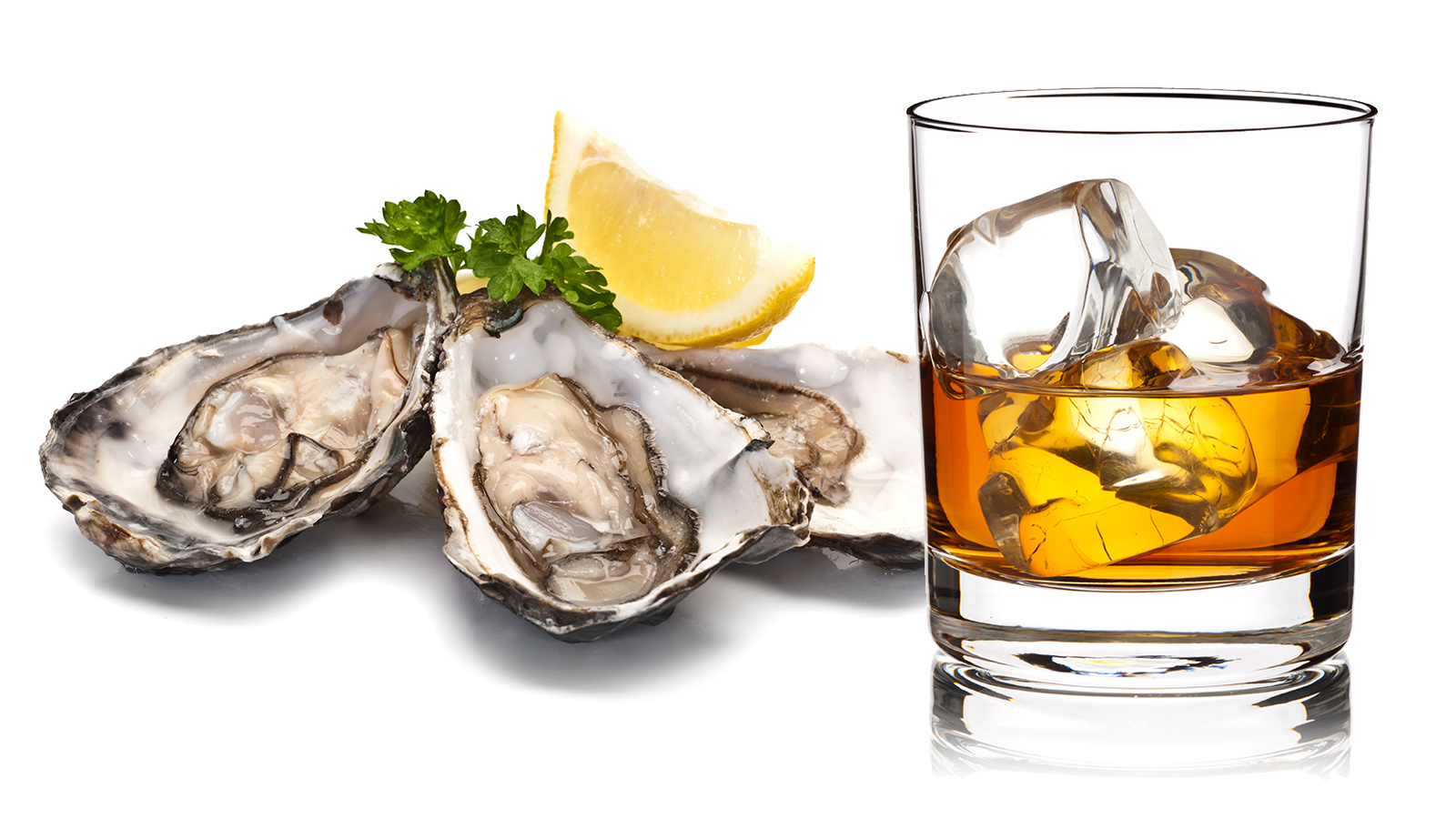
The world’s speediest oyster shucker has a long-standing love of bivalves and whisky.
The proprietor of Toronto’s Ceili Cottage and Guinness World Record holder for the most oysters opened in a minute—39—Patrick McMurray was still developing his shucking skills when he asked whisky writer Michael Jackson to autograph one of his books. On learning that McMurray worked in an oyster bar, Jackson appended his signature with some good advice: “Have Oban whisky with oysters.”
“That’s what first got me thinking about whisky and oysters,” says McMurray. Many years later, when the shucker visited Scotland’s Isle of Skye, he followed a stream that ran by the Talisker Distillery and discovered an oyster farm at its end.
“After that, I started to think about the places where oysters were grown and soon realized that a lot of them are located near distilleries,” he says. Since oysters literally capture their environment via the liquid contained within, he concluded, crafting a connection through water makes sense.
McMurray began to experiment first with oysters and whiskies from the same locales, and then with partnering the bivalves’ ‘merroir,’ as he defines an oyster’s sea-derived flavors, with the character of the whisky. So a brinier oyster would present well with an island or coastal malt, a fruitier shellfish with a rounder bourbon, and so on. This practice, he says, led him to a trick he still uses to get customers to sample their oysters unadorned.
“I tell them that they get a whisky reward after they eat the oyster, but I pour it right in the shell, so if they use a sauce they’ll ruin the taste of the whisky,” he says. “It’s a bit of fun, but people love it and it actually brings together the spirit and oyster flavors quite well.”
McMurray references the five main oyster varieties. Most common in North America is the Crassostrea virginica, including Canadian Malpeque and Cape Cod Wellfleet from the east coast, which McMurray says generally show the perfect balance of sweetness and salinity. In a nod to salted caramel, pair these with lighter, caramely Canadian whiskies, with the sweetness of the spirit picking up the brine and carrying it wonderfully.
European flat oysters, available in the U.S. as Maine Belons, are Ostrea edulis and have a meaty character, with a sweet earthy flavor and a mineraly tang on the finish. This is the sort of oyster Jackson likely envisioned when he recommended Oban, and he was right, although Irish pot still whiskeys also perform admirably.
Kumamotos are classics of the Crassostrea sikamea variety and their sweet, creamy, and often melony character partners with lighter, fruity Japanese whiskies, while the Olympia oyster, Ostrea lurida, has a full flavor but long, metallic finish, which invites the drier character of a Lowland malt.
Finally, the Crassostrea gigas, west coast or rock oyster, tends toward a meaty texture with cucumber or seaweed flavors, complemented well by sherried Speyside malts and high-rye bourbons.
3 Great Oyster and Whisky Combinations
Canadian Club 100% Rye + New Brunswick BeauSoleil
Soft spice and caramel notes from the whisky play superbly off the moderately salty, sweet, and dry-finishing oysters.
Buffalo Trace Bourbon + Gulf Oysters Rockefeller
A pairing of textures, with meaty and well-seasoned oyster meeting sweet and spicy whiskey.
Teeling Small Batch + Galway Flat
It’s worth the trip to Ireland to try this combination of toffee-ish, rum-tinged whiskey and creamy, seaweed-accented oyster. Try a drop in the shell, too.





